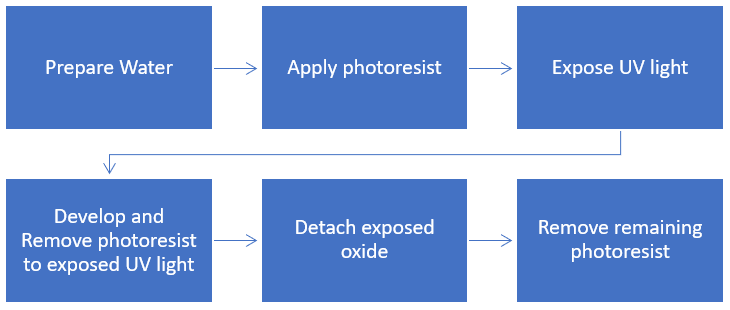This set of Engineering Physics Multiple Choice Questions & Answers (MCQs) focuses on “Fabrication of Nanomaterials”.
1. What’s the procedure in Top-down fabrication method?
a) Nano-particles -> Powder -> Bulk
b) Powder -> Bulk – > Nano-particles
c) Bulk -> Powder – > Nano-particles
d) Nano-particle – > Bulk -> Powder
View Answer
Explanation: Top-down approach is the one in which a material of regular size is converted into a nano-particle. In the bottom-up approach, the atoms are joined to form nano-particles.
2. Which of the following is an example of Bottom Up approach?
a) Attrition
b) Colloidal dispersion
c) Milling
d) Etching
View Answer
Explanation: Colloidal dispersion is an example of bottom up approach in the synthesis of Nano particles. Attrition, milling and etching are typical top down methods.
3. For milling operations, what kind of environment is preferred?
a) Acidic
b) Basic
c) Active
d) Inert
View Answer
Explanation: Milling is the process of particle size reduction with the objective of mixing or blending and change of particle size. An inert environment is preferred for this process.
4. What kind of metals are used for milling operations?
a) Soft and brittle
b) Soft and elastic
c) Hard and brittle
d) Hard and elastic
View Answer
Explanation: For the milling operation, normally hard brittle materials with fracture, deform and cold weld are used. The reason for choosing dense materials is the fact that the kinetic energy of balls depends upon their mass and velocity.
5. The following flow chart is for which method?

a) Milling
b) Attrition
c) Pattering
d) Microfabrication
View Answer
Explanation: The given process is the process of microfabrication. The water is prepared and then photoresist is applied. The product is exposed to the UV light which after a series of processes, results in the fabrication of nanomaterials.
6. CVD stands for ____________
a) Carbon vapour density
b) Chemical vapour density
c) Chemical vapour deposition
d) Carbon vapour deposition
View Answer
Explanation: Chemical vapour deposition, or CVD, is a chemical process used to produce high-purity, high-performance solid materials. The process is often used to produce carbon nanotubes.
7. Photolithography is a type of patterning technique.
a) True
b) False
View Answer
Explanation: Photolithography has been the predominant patterning technique for a long time. It will require the use liquid immersion and a host of resolution enhancement technologies.
8. Chemical solution deposition is also known as ____________
a) Sol-gel
b) CVD
c) Plasma spraying
d) Laser pyrolysis
View Answer
Explanation: Sol-gel, or chemical solution deposition, is used primarily for the fabrication of material starting from a chemical solution that acts as the precursor for an integrated network.
9. Typical precursor used in sol-gel are ____________
a) Metal oxides
b) Metal dioxides
c) Metal alkoxides
d) Metal fluorides
View Answer
Explanation: Metal alkoxides and metal chlorides are basically used as precursors in sol-gel. Furthermore, a colloidal suspension is formed when they undergo hydrolysis or poly-condensation.
10. The following is a bottom-up process.

a) True
b) False
View Answer
Explanation: Sol-gel is a bottom-up approach in which a precursor is used to for wither a network or a colloidal suspension, so as to form desired nanoparticles.
11. Particles of ZrO2, Y2O2 and Nano whiskers have been produced by __________
a) Sol-gel
b) CVC
c) Plasma spraying
d) Laser pyrolysis
View Answer
Explanation: CVC stands for chemical vapour condensation. It involves pyrolysis of vapours of metal organic precursors in a reduced pressure atmosphere.
12. Which gas serves as buffer gas in Laser ablation?
a) Nitrogen
b) Oxygen
c) Helium
d) Neon
View Answer
Explanation: Laser ablation has been extensively used for the preparation of nanoparticles. In the device, there is a pulsed flow of Helium gas. It serves as a buffer gas in which clusters of the target material form, thermalize.
Sanfoundry Global Education & Learning Series – Engineering Physics.
To practice all areas of Engineering Physics, here is complete set of 1000+ Multiple Choice Questions and Answers.
If you find a mistake in question / option / answer, kindly take a screenshot and email to [email protected]
